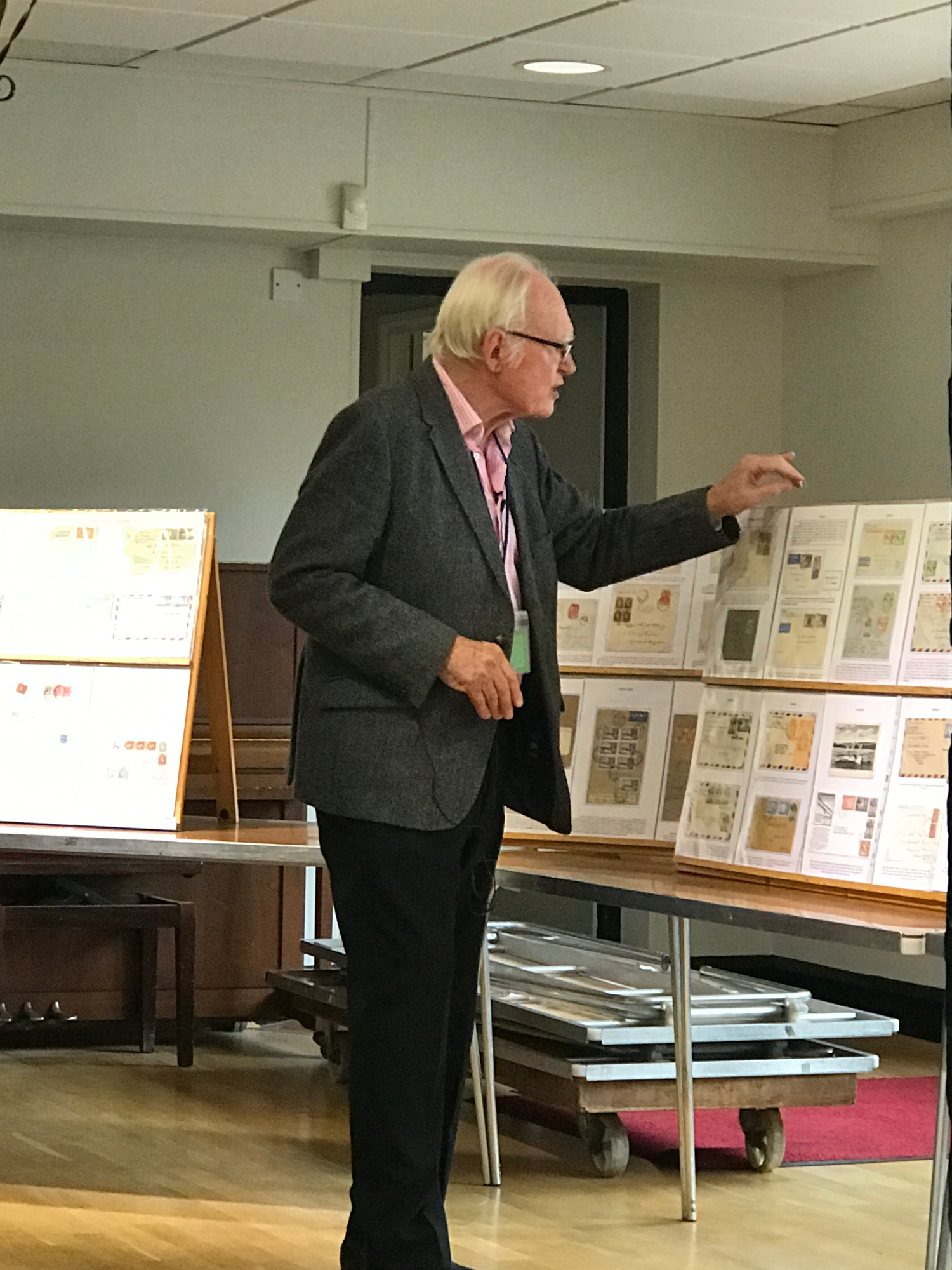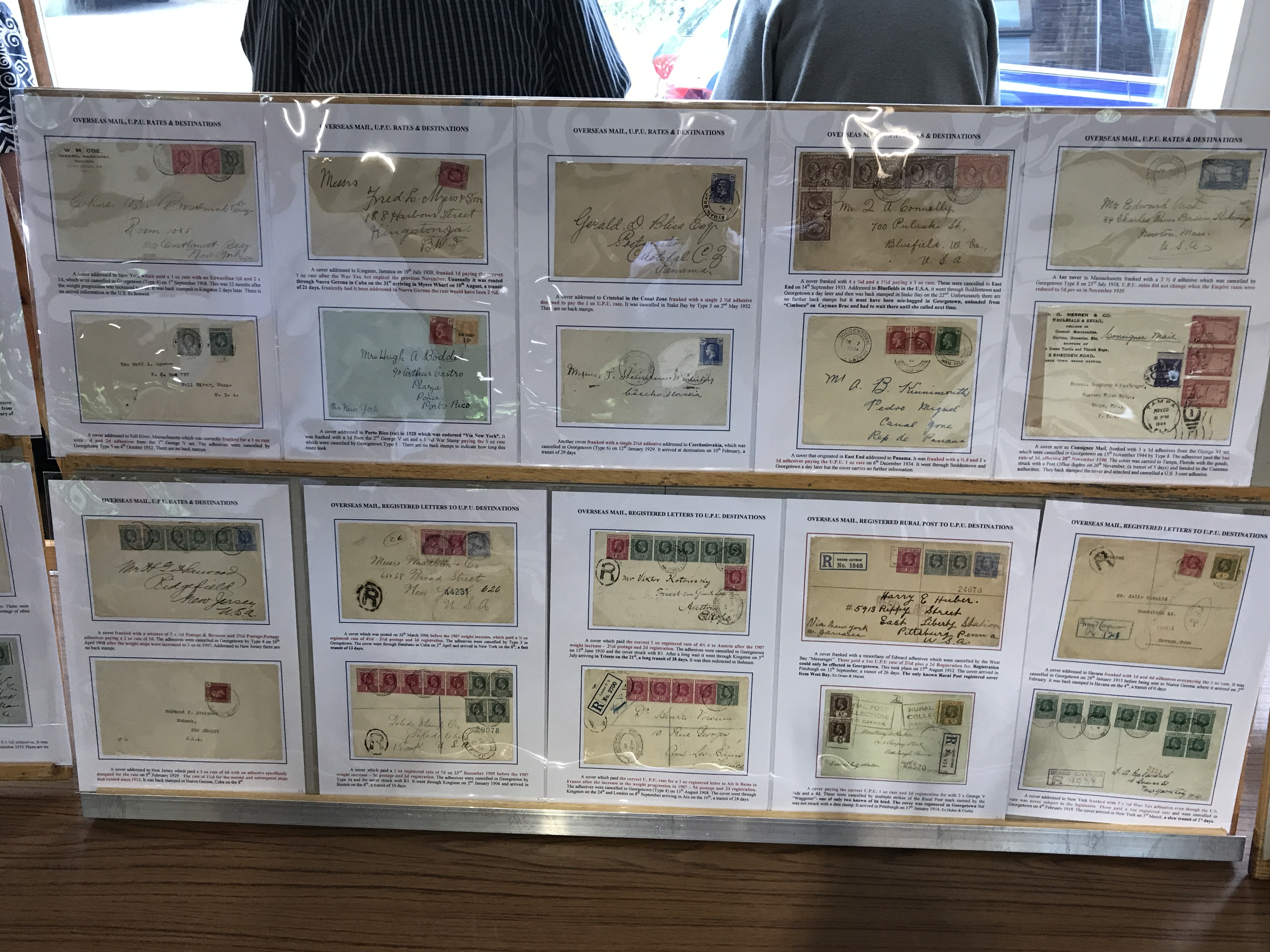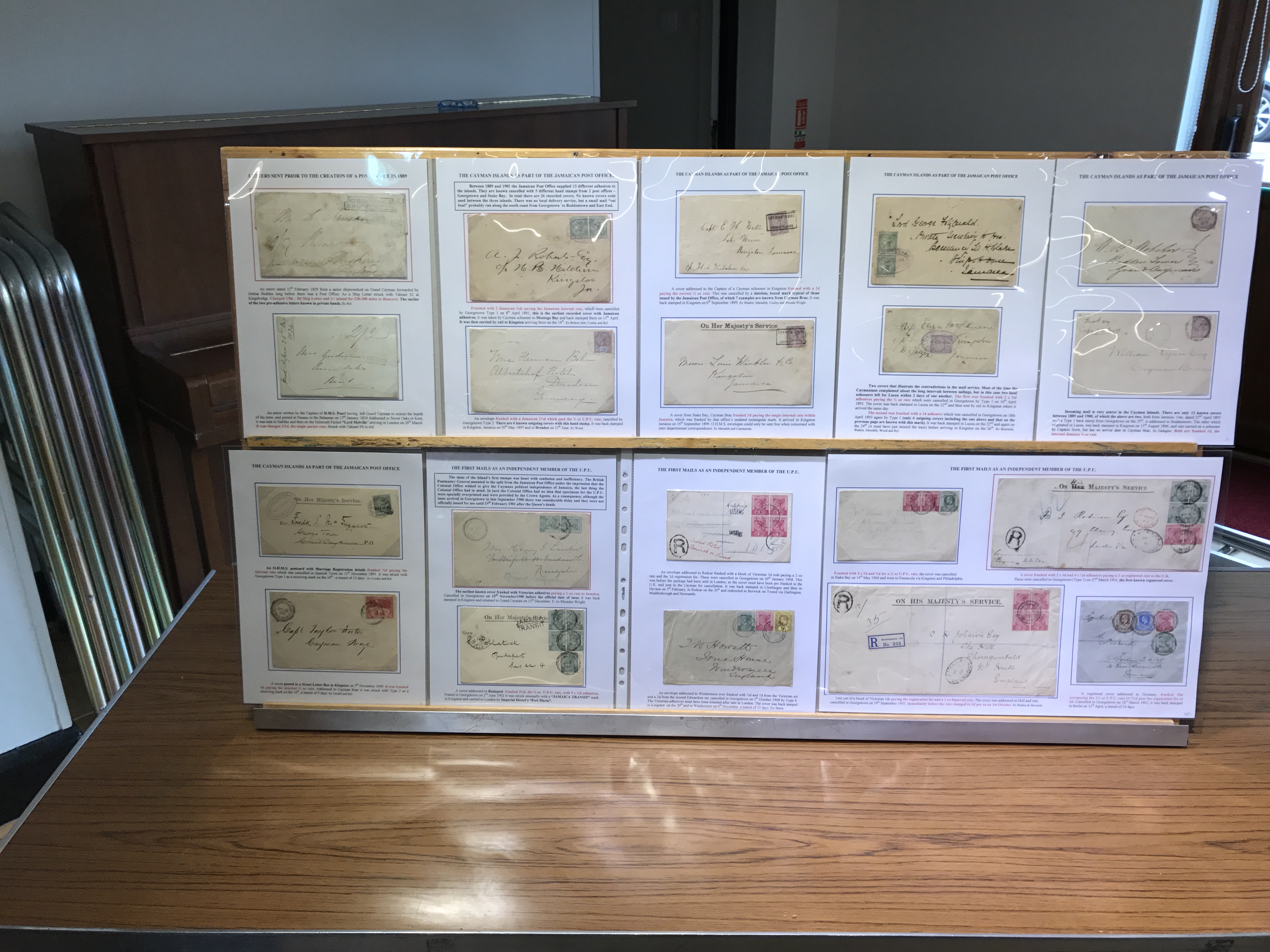50 members attended to hear Graham Booth’s display of Cayman Islands. He introduced the subject with maps showing the location of the Cayman Islands in the Caribbean and explained that they had been discovered by Columbus.
The postal history of the islands is confused, and the lack of records after several fires does not help. The stamps of Jamaica were used originally and £5 worth were sold in 1899. The first stamps arrived in September 1900, but were not issued until February 1901.
The display began with a pre-stamp cover from 1829, and then some uses of Jamaican stamps in the Caymans (only 26 covers known). We also saw the first recorded cover using Cayman stamps, dated November 1900. This was followed by the earliest dated registered cover.
A torrid period followed with stamps being withdrawn and re-emerging with surcharges. These created a great deal of interest from UK philatelists who wanted the stamps, which were eventually sold to the UK in 1908.
The 4d stamp was surcharged 2½d, but only 4 sheets were done. The 4p stamp is much forged, even on otherwise correct covers.
In 1932 there was a severe hurricane that destroyed stocks of stamps. The canceller was also mislaid. Provisionals were used and manuscript cancels until the canceller was found.
The first part closed with covers showing the long transit time to other West Indies destinations, and censored mail from both WWI and WWII.
The second part began with more censored mail that included a cover allegedly censored in Cayman, but posted in British Honduras.
In WWII the USAF set up a flying boat base for anti-submarine patrols, and Graham showed a cover. He followed with the only recorded Cayman Pow cover.
Next came a range of Postage Due covers, including Cayman stamps used in Jamaica that were disallowed.
We saw some examples of labels on incoming parcels as well as on outgoing parcels (these are even scarcer) and an underpaid book parcel from Jamaica with Postage Dues.
There was no airmail until 1936, when services from Jamaica could be used.
Next came a selection of artworks and covers from the 1950s/60s/70s showing bird and orchid issues. Some were signed by the designer, Jane Thatcher.
Finally, we saw a selection of blocks on cover, a reminder that Graham had once collected the stamps and a cover that related to a maritime disaster when ten ships were stranded on one reef.
James Podger gave the vote of thanks. He emphasised how scarce much of Graham’s material is, and he encouraged the audience to enjoy it while the collection is still together. A wonderful and enthralling afternoon.









